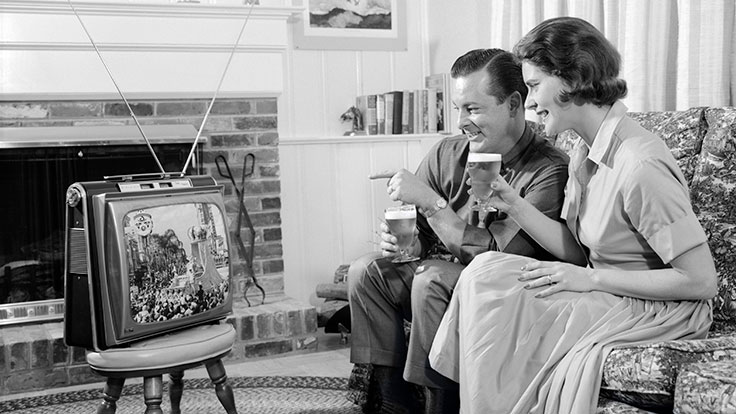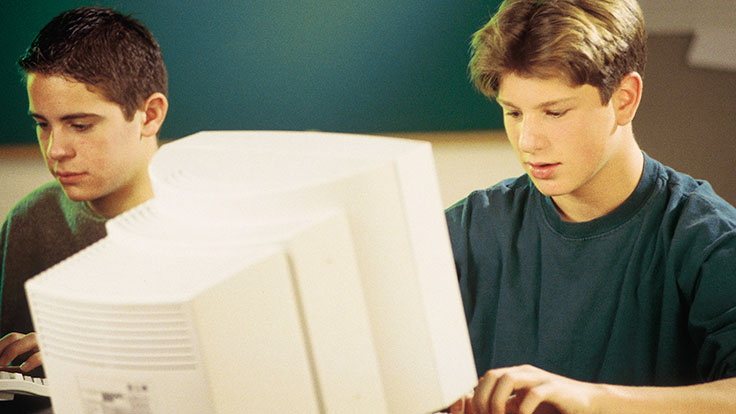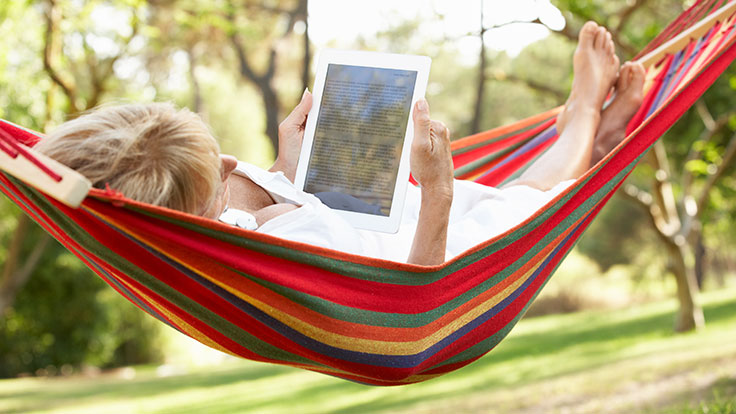History of house prices in Britain
Last updated 30th July 2025
6 min read
Over the years, house prices in the UK have rocketed. So much so, it's hard to remember a time when buying a new home cost less than £3,000. These days, you'd pay that much for a couple of months' rent in some parts of the country.
It may not have been easy for you to get on the property ladder when you were younger. But if you managed it, all your hard work may really pay off now.
We look back over the last 70 years to see how house prices have risen[1], and whether our wages could keep up.
Timeline of house prices
1950s
The average cost of a house at the start of 1954 was £1,863 (around £44,374 in today's money[2]). And the average annual salary was £100[3] (roughly £2,382[2]), so buying a property was no mean feat, even then.
On the upside, these new homes came with indoor toilets, revolutionising the way we did our business!
The electric fire, washing machine and humble fish finger were life-changing inventions of the era.
1960s
House prices continued to rise, with the average home costing £2,189 (approximately £43,956[2]) at the start of 1960.
By the end of the decade some of us were watching TV – in colour.
With these higher prices came mod cons. Most homes in the UK now had electricity, a fridge, cooker and TV.

1970s
This was a rocky decade with widespread unrest and hardship on the one hand, and a boom in home ownership on the other.
The mortgage market took off and house prices flew. At the start of the 70s the average house price was £4,378.
In 1974, the first microwave was sold and four years later the VHS video recorder meant we never had to miss our favourite TV programme again.
Our average earnings climbed too. But this was when the gap between wages and house prices began growing wider and wider.
The cost of home ownership continued to rise at lightning speed. By the end of the decade, the average house price had quadrupled to £21,966.
Avocado became the must-have colour for bathroom suites. And bathrooms became the place to ride your exercise bike.

1980s
Everything changed again. Margaret Thatcher gave people the right to buy their council houses. And house prices shot up like never before, reaching an average price of £23,730 at the start of 1981.
The world waited to see who shot JR in the TV series Dallas. And 'ghetto blaster' made it into the English dictionary.
You could expect to pay, on average, £59,534 for a home at the start of 1989.
Children of the 80s will remember wishing for an Amstrad, Commodore or ZX Spectrum home computer.

1990s
Spiralling interest rates led to the housing crash at the start of this decade[4], but the average cost of a home was still £59,587 – twice as much as just six years earlier.
A pint of milk cost 30p, compared to 65p today[5]. And in 1997, house prices were on average 3.6 times workers' annual salaries[6].
Slowly but surely, house prices started to creep up again in the late nineties. You could expect to pay, on average, £74,638 for your new pad at the end of 1999.
2000s
New millennium, new increase in house prices. And at almost £80,000 in five years, it was quite a big one. The average cost of a home reached a staggering £152,464 by the end of 2004.
Home gaming got serious – Nintendo sold its 100 millionth Gameboy console and PlayStation 2 was launched.
By the end of 2009, house prices leapt another £10,000. This meant the average property cost £162,116. While the average salary was around £23,900[7].
And popular TV show EastEnders – a staple across millions of UK homes – celebrated its 20th anniversary.
2010s
The average cost of a property was £162,887 at the start of 2010.
Instagram was launched, and Apple introduced the iPad[8].

By the end of 2015, you'd need around £197,044 to buy a house. While the average salary had only crept up to £27,600[9].
Jeremy Clarkson was suspended from TV show Top Gear after a set-to with a producer[10].
The average cost of a home was £212,694 at the start of 2019 – that's £210,831 more than in 1954. Quite a rise, wouldn't you agree?
Scientists discover a new breed of beetle with antennae-like plaits. They name it after teen climate activist Greta Thunberg[11].
House prices today
Home buying has never been that affordable. But as you can see, it's become less so in the last 40 years. Buying a house today will set you back £269,000[12].
If you bought your home years ago, and you've paid off your mortgage in full, you may be wondering 'how much has my house made me?'. Hopefully, the answer is quite a lot, and you'll have enough equity for a nice little nest egg.
It could even be the perfect amount to help get your children on the property ladder or pay for a new kitchen or conservatory. Equity release, as it's known, is a popular way to fund home improvements or leave an early inheritance.
So, while some people help their family by taking out over 50s life insurance, others choose to release tax-free cash from their home. It's something you might want to think about when the time comes.
What else is more expensive now than back in the day?
It's not just house prices that have gone up over the years. Here are a few items that aren't quite as cheap as they used to be:
- In the 1950s, a loaf of bread cost 4p, a pound of butter was 18p, a pint of milk was 3p[13]
- In the 1960s, a season ticket to see Manchester United play was £8.50 and the players were paid a maximum of £50 a week[14]
- In the 1970s, you could get two tickets to the cinema for less than 90p. And a brand-new Mini cost £600[15]
- In the 1980s, a first-class stamp cost 12p, and a cut and blow dry at Toni & Guy hair salon was £23[16], while a portion of fish and chips was just 83p[17]
Sounds like a bargain, compared to today's prices!
Sources
[1] House price figures are sourced from Nationwide's UK house prices since 1952 index (www.nationwidehousepriceindex.co.uk opens in a new tab)
[2] Bank of England inflation calculator(www.bankofengland.co.uk opens in a new tab)
[3] The Telegraph (2011), Facts about Britain at work in the Fifties(www.telegraph.co.uk opens in a new tab)
[4] The Guardian (2021), UK housing crisis: how did owning a home become unaffordable?(www.theguardian.com opens in a new tab)
[5] Office for National Statistics (2024), Average price of milk per pint(www.ons.gov.uk opens in a new tab)
[6] The Guardian (2017), Average house price at 7.6 times annual salary(www.theguardian.com opens in a new tab)
[7] Trades Union Congress (2006), Average wages in 2005(www.tuc.org.uk opens in a new tab)
[8] Hobbylark.com (2022), Year 2010 Fun Facts, Trivia, and History(hobbylark.com opens in a new tab)
[9] Office for National Statistics (2015), Annual Survey of house and Provisional Results (2015)(www.ons.gov.uk opens in a new tab)
[10] Wikipedia, 2015 in the United Kingdom(en.wikipedia.org opens in a new tab)
[11] Bestlifeonline.com (2019), The 19 Most Interesting Facts We Learned in 2019(bestlifeonline.com opens in a new tab)
[12] Office for National Statistics (2025), Private rent and house prices, UK: July 2025(www.ons.gov.uk opens in a new tab)
[13] The Mirror (2012), Back in the 50s(www.mirror.co.uk opens in a new tab)
[14] MailOnline (2009), 1960: The year The Beatles formed, a loaf of bread cost 5p and a house £2,530(www.dailymail.co.uk opens in a new tab)
[15] The Guardian (2004), The cost of living then: 20p a pint, and a Mini for £600(www.theguardian.com opens in a new tab)
[16] Thisismoney.co.uk (2007), How prices have changed in 25 years(www.thisismoney.co.uk opens in a new tab)
[17] Inflationdata.com (2021), Cost of Living – Fish and Chips(inflationdata.com opens in a new tab)
The thoughts and opinions expressed in the page are those of the authors, intended to be informative, and do not necessarily reflect the official policy or position of SunLife. See our Terms of Use for more info.
